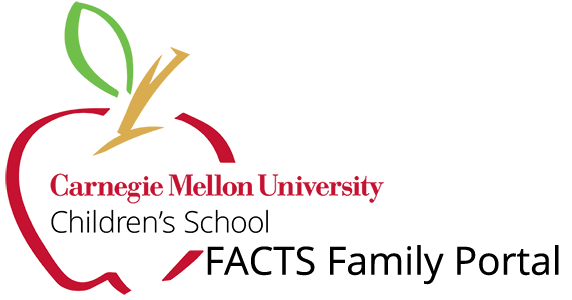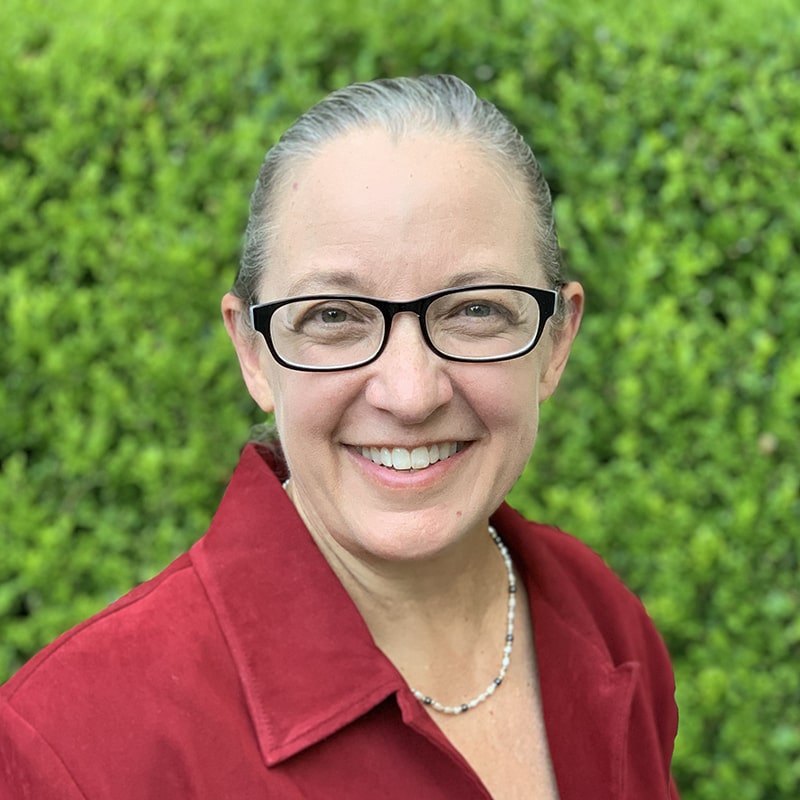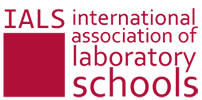October 2020: Lifeworthy Learning
As we return to work and school after the pandemic lockdowns, I have heard some colleagues bemoan the use of the phrase “the new normal” and suggest, instead, “the new important”. This shift to a more essential orientation is similar to the way David Perkins, a professor at the Harvard Graduate School of Education, frames the future of learning in terms of six “beyonds”, or ways in which educators are “reimagining education with much less ‘niche learning’” and much more “lifeworthy learning”. He encourages us to aim beyond local to more global perspectives, beyond learning mere content to developing 21st century skills, beyond understanding topics to using knowledge as tools for thinking and action, beyond prescribed studies to more personalized curricula, beyond discrete disciplines to more interdisciplinary investigation, and beyond traditional disciplines to more extended visions of their possibilities. All of these ways of stretching beyond the current reality are even more poignant when viewed through a year 2020 lens.
In both 2004 and 2013, our educators explored The Art of Possibility: Transforming Professional and Personal Life, a 2000 book of practices by Rosamund Stone Zander and Benjamin Zander. A major point of the book is that the story we tell ourselves, or our frames of thinking, both define and confine us so that we do most of our thinking inside the box. Once we admit to ourselves that the way we narrate the story is all an invention, then we can enlarge the box so that we can consider a whole set of new possibilities that were always present but never before apparent to us. To “Admit It’s All Invented” is about examining underlying assumptions. When facing challenges, the Zanders suggest asking, “What assumption am I making, that I’m not aware I’m making, that gives me what I see?” and then, “What might I now invent, that I haven’t yet invented, that would give me other choices?” Using this perspective on problem solving in preparation for re-opening school, we have made strides in using videos to orient children to school, staggering our schedules to limit interaction during greeting, and expanding our use of the reflection garden for more open-air time. Interestingly, each of these changes – though forced by the pandemic – actually improved challenges that we had faced previously but may have thought impossible to address.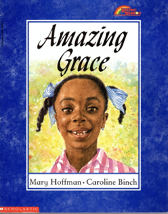 Each time we revisit the “Art of Possibility” practices, we wonder why they are neglected in education when they are so necessary for a future of lifeworthy learning. This pondering reveals a hidden assumption and prompts us to seek opportunities for helping our children open themselves to thinking in terms of possibilities. At the Children’s School, we have collected a variety of children’s books to help launch discussions with the children. In my Director’s Corner articles this year, I plan to introduce you to the twelve “Art of Possibility” practices and suggest ways that families can support the use of these practices to transform their thinking and their lives. The first practice, “Admit It’s All Invented”, is about learning to question the story “everybody knows” and narrate a more positive story “that brightens our life and the lives of people around us (p. 12).” I suggest that you start with a story time reading of Amazing Grace by Mary Hoffman. Let yourselves be inspired by Grace’s courage to challenge the limitations of race and gender so that you consider new ways for each of your family members to contribute creatively and constructively at home, at school, and in the community, even when our interactions are limited or virtual. We look forward to working in partnership with you to encourage each of our unique children to thrive!
Each time we revisit the “Art of Possibility” practices, we wonder why they are neglected in education when they are so necessary for a future of lifeworthy learning. This pondering reveals a hidden assumption and prompts us to seek opportunities for helping our children open themselves to thinking in terms of possibilities. At the Children’s School, we have collected a variety of children’s books to help launch discussions with the children. In my Director’s Corner articles this year, I plan to introduce you to the twelve “Art of Possibility” practices and suggest ways that families can support the use of these practices to transform their thinking and their lives. The first practice, “Admit It’s All Invented”, is about learning to question the story “everybody knows” and narrate a more positive story “that brightens our life and the lives of people around us (p. 12).” I suggest that you start with a story time reading of Amazing Grace by Mary Hoffman. Let yourselves be inspired by Grace’s courage to challenge the limitations of race and gender so that you consider new ways for each of your family members to contribute creatively and constructively at home, at school, and in the community, even when our interactions are limited or virtual. We look forward to working in partnership with you to encourage each of our unique children to thrive!
November 2020: Potential New Paths
The second step in learning The Art of Possibility, according to Zander and Zander (2000) is to move beyond the constraints of our world of measurement and “Step into the Universe of Possibility”. At both school and home, excessive focus on assessment, grades, norms, and comparisons creates an emphasis on competition between children, classes, schools, and families as each strives for the highest rank in a system that restricts the label of “success” for the top few. Setting measurement aside opens the possibilities of each one’s potential so that we can imagine what can be. This stance allows us to use the first practice to invent a positive and productive narrative. Zander and Zander suggest that, “We decide that the essence of a child is joy, and joy she is. Our small business attracts the label, ‘The Can-Do Company,’ and that is exactly who we are.” Basically, this practice is about how we think about the people and situations that we encounter. By orienting ourselves to the abundant possibilities, we can risk being cooperative, including everyone, and together being the best we can be.
Our quick pivot to remote learning in March and negotiations for re-opening school in September both required us to imagine a new universe of possibilities well beyond what we had previously considered desirable or even possible. Similarly, both educators and families who responded with openness to the challenges of balancing life and work within the confines of home often created positive new practices to capitalize on their unique family strengths. For a family reading time related to this point, you might enjoy 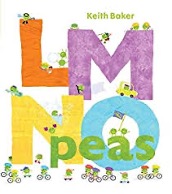 Keith Baker’s children’s book L, M, N, O, peas, which is “for pea-ple everywhere – young and old, large and small, green and round.” The book includes an alphabet of characters (all represented by peas) contributing their talents to the world. The acrobats, artists, and astronauts are all valued, as are the quilters and quarterbacks, the scientists, swimmers, and sailors. Both the text and the illustrations emphasize the uniqueness of each pea character, and the book ends with an invitation to consider, “Who are you?” Helping each other identify ourselves as helpers, listeners, friends, explorers, etc. will help each of us live into the possibilities for our unique potential to enrich the family during the pandemic.
Keith Baker’s children’s book L, M, N, O, peas, which is “for pea-ple everywhere – young and old, large and small, green and round.” The book includes an alphabet of characters (all represented by peas) contributing their talents to the world. The acrobats, artists, and astronauts are all valued, as are the quilters and quarterbacks, the scientists, swimmers, and sailors. Both the text and the illustrations emphasize the uniqueness of each pea character, and the book ends with an invitation to consider, “Who are you?” Helping each other identify ourselves as helpers, listeners, friends, explorers, etc. will help each of us live into the possibilities for our unique potential to enrich the family during the pandemic.
The third practice “Give Yourself and Others an A” starts from an affirmation that everyone has potential and focuses on helping each individual to shine. By assigning an A grade at the outset, we can then seek meaningful ways to support each person’s progress. When the inevitable mistakes occur, we seek to learn from them. The authors suggest an initial reaction of, “How fascinating!”, which then prompts positive andproactive problem solving. In this regard, You Are My I Love You (MaryAnn Cusimano Love, 2001) highlights the ways that parent and child can view each other’s qualities as valuable contributions along life’s journey, rather than as nuisances, weaknesses or failures. The poetic book starts with, “I am your parent; you are my child. I am your quiet place; you are my wild.” When I became a grandparent, I particularly appreciated the line, “I am your way home; you are my new path.” 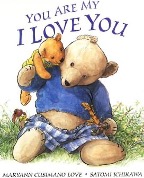 While supporting my daughter’s choices led me to learning about different lifestyles, foods, and birthing practices, I also found that my willingness to do so enabled her to seek connections with our family traditions going back generations. When parenting challenges you, especially in 2020, try to free yourself from expectations and comparisons so you can take a fresh look at your child and at the situation. Look for the possibilities open to you, be bold in exploring them, and appreciate the resulting growth in both you and your child.
While supporting my daughter’s choices led me to learning about different lifestyles, foods, and birthing practices, I also found that my willingness to do so enabled her to seek connections with our family traditions going back generations. When parenting challenges you, especially in 2020, try to free yourself from expectations and comparisons so you can take a fresh look at your child and at the situation. Look for the possibilities open to you, be bold in exploring them, and appreciate the resulting growth in both you and your child.
December 2020: Imagine the Ripples
There’s nothing like a pandemic to demonstrate the ripple effect of simple choices made by individuals, such as consistently wearing a mask or not, which can make the difference between safe social interactions and super-spreader events. Effectively explaining these choices to young children focuses on the ways that our choices can impact ourselves and others. Developmental Psychologist Richard Lerner (Tufts University) highlights the importance of personal contribution for children’s development. “Nothing may matter more for the healthy development of young people than a belief that they matter: that they are valued by others and that they can make meaningful contributions to their world.”
The fourth practice in learning The Art of Possibility (Zander and Zander, 2000) emphasizes “Being a Contribution”. The authors suggest replacing the typical “success/failure” game that promotes competition in a measurement universe with the “contribution” game. “In the game of contribution, you wake up each day and bask in the notion that you are a gift to others (p. 58) … [such that you] throw yourself into life as someone who makes a difference, accepting that you may not understand how or why (p. 59).” The authors suggest starting by reflecting on the ways you have “contributed” over the past week – in any aspect of life. The next task is to simply notice the contributions as the week progresses. The third is to cast yourself “as a contribution into the week ahead, like a pebble into a pond, and imagine that everything [you] do sends ripples out beyond the horizon (p. 62).”
As laboratory school educators, we have the privilege of serving diverse constituents by facilitating researchers’ studies, supporting university students’ coursework, offering children the best possible preschool and kindergarten programs, collaborating with families to nurture their children and handle challenges that arise, organizing professional development experiences for practicing educators, and mentoring students pursuing careers in early childhood. Sometimes we are fortunate to see the ripples spread, as our mentees become mentors themselves, or the children we teach return years later with their own children. Most times, however, we never know the impact of our words and actions, and the greatest impact may not be from the parts of our job listed on our mission statement or even on the individuals it is our job to serve. For example, the way we treat the professional who cleans our school on the night shift or the construction crew that modifies our windows or playground for pandemic safety may have more impact than anything else we do in a given day, particularly as we acknowledge the important contributions they make so that we can do our work here well.
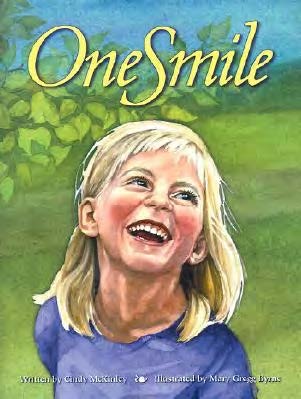 As educators and parents nurturing young children, we have daily opportunities to make contributions in big and small ways. More importantly, however, we can help our children understand the valuable contributions they make to our families, school community, and beyond. Because of the pandemic, we may have to be more creative to contribute from a distance or virtually, but the impact can still be significant. It can be as simple as “One Smile”, as beautifully told in the book by Cindy McKinley. In the story, Katie’s spontaneous smile encourages a young man to keep looking for a job, his willingness to help a stranded motorist on the way prompts her to leave a big tip for the waitress who then treats her children to some special food that they then decide to share with a new family in town. And so it goes. It’s a wonderful example for the whole family, especially during this season of thanksgiving and celebration!
As educators and parents nurturing young children, we have daily opportunities to make contributions in big and small ways. More importantly, however, we can help our children understand the valuable contributions they make to our families, school community, and beyond. Because of the pandemic, we may have to be more creative to contribute from a distance or virtually, but the impact can still be significant. It can be as simple as “One Smile”, as beautifully told in the book by Cindy McKinley. In the story, Katie’s spontaneous smile encourages a young man to keep looking for a job, his willingness to help a stranded motorist on the way prompts her to leave a big tip for the waitress who then treats her children to some special food that they then decide to share with a new family in town. And so it goes. It’s a wonderful example for the whole family, especially during this season of thanksgiving and celebration!
January 2021: Lead from Within
When we begin to anticipate the ways that we and others can “Be a Contribution”, then The Art of Possibility’s fifth practice, “Leading from Any Chair”, is a natural extension. As with many of the book’s anecdotes, this practice’s signature phrase originated in an experience the second author, Benjamin Zander, had while conducting an orchestra. In this case, Zander’s insight came from his recognition that the “silent conductor”, who makes none of the symphony’s beautiful music, is truly powerful only by “his ability to make other people powerful” (p. 69). He then reflected on ways to create conditions that would encourage “the greatest possible attentiveness and participation of all the players” (p. 73). He gradually discovered that by intentionally seeking and then actively utilizing the input of the musicians, including occasionally asking them to conduct, that he could more effectively partner with the orchestra to offer the best performance possible.
At the Children’s School, we try to create such synergy by going beyond valuing each individual’s contributions to actually inviting leadership from within the organization. As Zander explains, “A leader does not need a podium; she can be sitting quietly on the edge of any chair, listening passionately and with commitment, fully prepared to take up the baton (p. 76).” I recall a shift in the Children’s School staff culture when educators stopped bringing problems for me to solve and started coming instead with descriptions of challenges, ideas about courses of action, and a suggestion about which to pursue. In similar ways, the teachers aim to balance proactive planning of daily learning activities with flexibly responding to the children’s initiative. Fostering that culture within a school, or indeed within a family, requires that those in the official leadership positions prepare themselves and those they lead by offering diverse opportunities to explore varied roles.
During our recent and upcoming units on Storytelling (PreS 4’s, PreK & K) or Mo Willems Author Studies (PreS 3’s, PreK & K), the children re-enact stories in the role of different characters, take turns as the narrator, compare and contrast versions of stories, become authors and illustrators of their own stories, etc. Similarly, when block-building, they can practice collaborating and contributing their ideas about what will make their constructions stable, functional, and aesthetically interesting. Regardless of the unit topics or classroom activities, our educators facilitate children’s effective interactions in social situations. During the pandemic, there has been conversation about how we all contribute to keeping each other safe from the virus. Watching the violence in the U.S. Capitol reminds us to begin early talking with our children about how to lead positively from within a group. 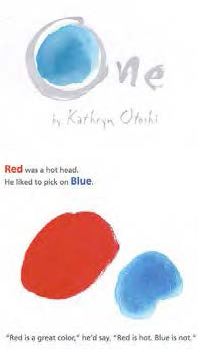 For the natural leaders, we help children practice being inclusive rather than bossy; whereas, for others, we support them to stand up for their own and others’ rights among peers. One of the books we have used in the past is called “One” by Kathryn Otoshi. In the story, “BLUE is a quiet color. RED is a hot head. RED likes to pick on BLUE. YELLOW, GREEN, PURPLE, and ORANGE don't like what they see, but what can they do? When no one takes a stand, things get out of hand. Until ONE comes along and shows all the colors how to stand up and COUNT.” This book is also relevant for families, especially when parents wonder how to help their children navigate the common power struggles among siblings and peers, as well as how to respond when they witness injustices in the world around them. As we begin a new year with such tension surrounding the nation’s leadership transition, let’s commit to dialogue and partnership so that together we can help all of our children gain confidence in their ability to lead from within their families, their classrooms, and their communities.
For the natural leaders, we help children practice being inclusive rather than bossy; whereas, for others, we support them to stand up for their own and others’ rights among peers. One of the books we have used in the past is called “One” by Kathryn Otoshi. In the story, “BLUE is a quiet color. RED is a hot head. RED likes to pick on BLUE. YELLOW, GREEN, PURPLE, and ORANGE don't like what they see, but what can they do? When no one takes a stand, things get out of hand. Until ONE comes along and shows all the colors how to stand up and COUNT.” This book is also relevant for families, especially when parents wonder how to help their children navigate the common power struggles among siblings and peers, as well as how to respond when they witness injustices in the world around them. As we begin a new year with such tension surrounding the nation’s leadership transition, let’s commit to dialogue and partnership so that together we can help all of our children gain confidence in their ability to lead from within their families, their classrooms, and their communities.
February 2021: The Best Medicine
The continuing Coronavirus pandemic, with the resulting changes in routines and plans, plus a myriad of other uncertainties and inconveniences, sets the perfect context for considering the sixth and seventh practices advocated by Zander and Zander in The Art of Possibility. “Rule #6”, which is actually the only “rule” in the book, is to lighten up rather than taking ourselves so seriously. The authors explain that replacing our calculating, exacting, demanding selves with ones who acknowledge the power of humor, laughter, and play will reveal our more compassionate, creative and expressive sides. For most of us, that means being willing to laugh at ourselves when the best-laid plans fail, when nature trumps our control of the schedule, and when perfection eludes us. Some say, “Laughter is the best medicine.”
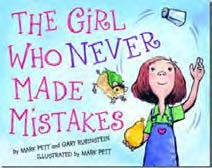 One children’s book that highlights this practice from a child’s point of view is “The Girl Who Never Made Mistakes”, by Mark Pett and Gary Rubinstein. In the story, 9-year-old Beatrice is perfect; she never makes the mistakes other children make, and she always wins the town talent contest with her juggling act. As the authors introduce us to Beatrice’s day, we see her avoiding her friends’ activities because of the risk of making mistakes. We also begin to understand that Beatrice spends much time worrying about her performance and that the anxiety builds as more people affirm her for never making mistakes. Beatrice and her community learn an important lesson about Rule #6 when she makes a very public mistake and experiences the freedom that comes from being able to laugh at herself and with her friends about it.
One children’s book that highlights this practice from a child’s point of view is “The Girl Who Never Made Mistakes”, by Mark Pett and Gary Rubinstein. In the story, 9-year-old Beatrice is perfect; she never makes the mistakes other children make, and she always wins the town talent contest with her juggling act. As the authors introduce us to Beatrice’s day, we see her avoiding her friends’ activities because of the risk of making mistakes. We also begin to understand that Beatrice spends much time worrying about her performance and that the anxiety builds as more people affirm her for never making mistakes. Beatrice and her community learn an important lesson about Rule #6 when she makes a very public mistake and experiences the freedom that comes from being able to laugh at herself and with her friends about it.
In a similar way, the practice of being present to “The Way Things Are”, including our reactions to the situations we encounter, prevents us from becoming paralyzed. “The capacity to be present to everything that is happening, without resistance, creates possibility… you can leave behind the struggle to come to terms with what is in front of you and move on (p. 101). This kind of thinking is especially important when we make mistakes. If we first follow Rule #6, then we can take the next step to own mistakes as part of the learning process and attend fully to the possibilities ahead. When situations happen to us or are in other ways out of our control, Zander and Zander emphasize eliminating our focus on what “should be”, as well as avoiding the common responses of avoidance, denial, and blame. While it may be that the reality of the bad situation cannot change, the way that we view the situation – as a glass half empty or one half full, for example – will determine whether our thinking spirals in a negative direction or radiates with possibility.
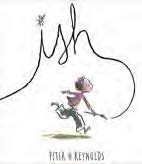 When raising or teaching young children, we gradually realize that much of who they are and will become is out of our control. How will we react when they, or we their caregivers, do not meet “the standard”? In the children’s book “Ish”, Peter H. Reynolds explores this question as Ramon, whose passion is drawing, encounters an older brother who tells him that his pictures are no good. Ramon struggles to meet his brother’s standard but gives up drawing when he continually feels inferior. His younger sister offers a new possibility by suggesting that Ramon’s drawings may not look exactly like a flower, house, sun, etc. but that they look flower-ish, house-ish, sun-ish. Her perspective frees Ramon to think “ish-ly” about his drawing and other aspects of life so that he can fully engage once more. Let’s encourage each other and our children to adopt such playful and positive attitudes as we continue to navigate the typical challenges of life and work while in the pandemic context.
When raising or teaching young children, we gradually realize that much of who they are and will become is out of our control. How will we react when they, or we their caregivers, do not meet “the standard”? In the children’s book “Ish”, Peter H. Reynolds explores this question as Ramon, whose passion is drawing, encounters an older brother who tells him that his pictures are no good. Ramon struggles to meet his brother’s standard but gives up drawing when he continually feels inferior. His younger sister offers a new possibility by suggesting that Ramon’s drawings may not look exactly like a flower, house, sun, etc. but that they look flower-ish, house-ish, sun-ish. Her perspective frees Ramon to think “ish-ly” about his drawing and other aspects of life so that he can fully engage once more. Let’s encourage each other and our children to adopt such playful and positive attitudes as we continue to navigate the typical challenges of life and work while in the pandemic context.
March 2021: The Heart of Work
When we adopt the playful and positive attitudes toward our learning, as advocated by Zander and Zander’s practices of “Rule #6” and “The Way Things Are”, then we experience the freedom to engage fully in our life and work. This freedom is the foundation for The Art of Possibility’s next two practices, both of which resonate very well with the learning culture at the Children’s School and at Carnegie Mellon. Our work here is guided by Andrew Carnegie’s motto, “My heart is in the work.” Our leaders embrace a passionate sense of possibility, which is exactly what Zander and Zander advocate when they talk about “Giving Way to Passion.” In fact, they suggest “actively surrendering our boundaries” so that we can participate wholly with an urgency and momentum to our efforts. This passion yields a “spiritedness in going beyond where before [we] might have stopped” (p. 121), which then inspires others to also do their best.
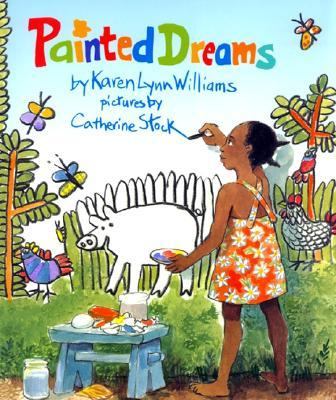
Karen Lynn Williams’ book, “Painted Dreams”, demonstrates the possibilities envisioned by Ti Marie when she refuses to have her passion for art limited by her Haitian family’s poverty and her need to help with daily chores and caregiving. With only a small amount of found materials, she secretly creates a mural that attracts the attention of her entire community, improves her mother’s market sales, and even impresses the revered elder artist in town, all of which change the way her parents view and value her unique talent, so she is free to develop it further. The next step, of course, is that passion freely embraced and expressed results in “Lighting a Spark” of possibility in others such that they eagerly enroll themselves in similarly passionate endeavors. “The practice of enrollment is about giving yourself as a possibility to others and being ready, in turn, to catch their spark.” During the past year, our educators’ deep commitment to young children and to collaboration with each other, our families, and our university leaders helped us all to stretch beyond our well-established practices to creatively work within everchanging constraints to design a new Children’s School model for both in-person and remote early childhood learning. Our success with new spaces, new schedules, new cleaning routines, and new family engagement venues results from passions shared and connections made.
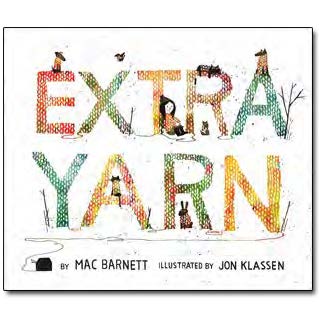 The book, “Extra Yarn” by Mac Barnett “is the story of how a young girl and her magical box of yarn transform a community” from a black and white world of isolation to a colorful world of connection. Annabelle simply enjoys knitting and sharing her knitted garments with everyone and everything in town, including pets, trucks, and houses. She quietly persists despite disbelief and criticism, and she steadfastly refuses to accept millions of dollars from a powerful person who seeks to control the never-empty box of yarn. In the end, passion trumps power and Annabelle’s spark brightens others’ lives. As we together strive to facilitate each of our children’s development, let us aim to awaken their passions for learning and be open to the sparks they have to share with us at school and at home. We have purposely shared our children’s spark with the campus community this year by posting artwork and sharing videos to bring smiles amidst the chaos. By seeking ways to share the joy that they inspire, we can reduce our neighbors’ isolation and connect more fully with each other as we all try our best to live and work while navigating these challenging times.
The book, “Extra Yarn” by Mac Barnett “is the story of how a young girl and her magical box of yarn transform a community” from a black and white world of isolation to a colorful world of connection. Annabelle simply enjoys knitting and sharing her knitted garments with everyone and everything in town, including pets, trucks, and houses. She quietly persists despite disbelief and criticism, and she steadfastly refuses to accept millions of dollars from a powerful person who seeks to control the never-empty box of yarn. In the end, passion trumps power and Annabelle’s spark brightens others’ lives. As we together strive to facilitate each of our children’s development, let us aim to awaken their passions for learning and be open to the sparks they have to share with us at school and at home. We have purposely shared our children’s spark with the campus community this year by posting artwork and sharing videos to bring smiles amidst the chaos. By seeking ways to share the joy that they inspire, we can reduce our neighbors’ isolation and connect more fully with each other as we all try our best to live and work while navigating these challenging times.
April 2021: Cooperative Stance
After embracing our own passions and enrolling in the inspired causes of others, we can purposefully orchestrate significant transformations, as exemplified in The Art of Possibility. Zander and Zander advocate “Being the Board”, by which they mean renaming yourself “as the board on which the whole game is being played” (p. 141). In this practice, we quit playing the Blame Game, in which we focus on “shoulds” and “oughts” but really cannot do anything about others’ choices, and we choose to focus less on gaining control and more on making a difference that will improve our experience of the situation.
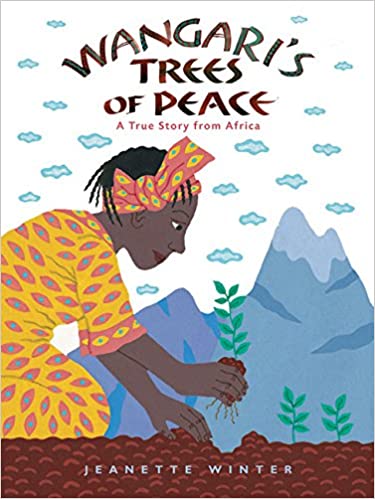 For example, when the Children’s School flooded in 2009 and then again in 2011, we could have chosen to play a game of panic or pity, to be demanding or downtrodden, but we chose instead to play a more collaborative game of optimism and opportunity. In both cases, our approach led to positive relationships with the professionals who assisted with our restoration and to productive renovations by combining our insurance funding with capital reserves. The lessons learned then prepared us for a productive pandemic response in partnership with Carnegie Mellon. If adults model such strategies for improving our experience of the situations we face, while also helping children to practice similar strategies in small ways, they can build strong skills for facing future challenges. For example, when distributing sit-upons or trays, we have a saying that, “You get what you get, and you don’t get upset.” Being the board in this context might involve choosing not to whine about not getting your favorite green sit-upon and instead choosing to pretend that the brown one you got is a lovely magic carpet. A real-life example written for children is “Wangari’s Trees of Peace”, by Jeanette Winter, a true story of Wangari Maathai, a Kenyan environmentalist and winner of the Nobel Peace Prize. Wangari faces the challenge of deforestation of her homeland and repeated opposition from the male-dominated government and business sector by changing the game and planting saplings herself while teaching other women to do the same. Her vision, determination, and creative incentives yielded widespread commitment to replenishing the trees and sustainably managing Kenya’s natural resources.
For example, when the Children’s School flooded in 2009 and then again in 2011, we could have chosen to play a game of panic or pity, to be demanding or downtrodden, but we chose instead to play a more collaborative game of optimism and opportunity. In both cases, our approach led to positive relationships with the professionals who assisted with our restoration and to productive renovations by combining our insurance funding with capital reserves. The lessons learned then prepared us for a productive pandemic response in partnership with Carnegie Mellon. If adults model such strategies for improving our experience of the situations we face, while also helping children to practice similar strategies in small ways, they can build strong skills for facing future challenges. For example, when distributing sit-upons or trays, we have a saying that, “You get what you get, and you don’t get upset.” Being the board in this context might involve choosing not to whine about not getting your favorite green sit-upon and instead choosing to pretend that the brown one you got is a lovely magic carpet. A real-life example written for children is “Wangari’s Trees of Peace”, by Jeanette Winter, a true story of Wangari Maathai, a Kenyan environmentalist and winner of the Nobel Peace Prize. Wangari faces the challenge of deforestation of her homeland and repeated opposition from the male-dominated government and business sector by changing the game and planting saplings herself while teaching other women to do the same. Her vision, determination, and creative incentives yielded widespread commitment to replenishing the trees and sustainably managing Kenya’s natural resources.
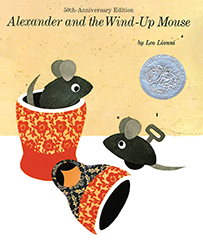 Zander and Zander’s next practice involves articulating a common vision of harmony, peace, and plenty. Leadership in “Creating Frameworks for Possibility” involves boldness like that of Dr. Martin Luther King, Jr. who shared his “dream of equality of opportunity, of privilege and property widely distributed …” or the teacher who shaved her head in order to help the healthy children in her group better connect with the classmate having chemotherapy. “Alexander and the Wind-Up Mouse” by Leo Lionni is a children’s story about envisioning new possibilities. Alexander, a real mouse who is tired of being chased and avoiding mousetraps, wishes to be a wind-up mouse like Willy, who everyone seems to love. The two become friends while Alexander pursues a magical means of becoming like Willy. When he learns that Willy is about to become trash with other old toys, Alexander considers a new, self-sacrificing option for the friendship to continue. Creating frameworks for possibility is about designing new games for living, where playing becomes more important than winning and everyone can participate fully. During the pandemic, we have all had the opportunity to choose a cooperative approach as we support each other in making strategic choices for the good of the community, even when they may be inconvenient for the individual. Similarly, we partner to enhance both our teaching and parenting, particularly with so many current circumstances beyond our collective control.
Zander and Zander’s next practice involves articulating a common vision of harmony, peace, and plenty. Leadership in “Creating Frameworks for Possibility” involves boldness like that of Dr. Martin Luther King, Jr. who shared his “dream of equality of opportunity, of privilege and property widely distributed …” or the teacher who shaved her head in order to help the healthy children in her group better connect with the classmate having chemotherapy. “Alexander and the Wind-Up Mouse” by Leo Lionni is a children’s story about envisioning new possibilities. Alexander, a real mouse who is tired of being chased and avoiding mousetraps, wishes to be a wind-up mouse like Willy, who everyone seems to love. The two become friends while Alexander pursues a magical means of becoming like Willy. When he learns that Willy is about to become trash with other old toys, Alexander considers a new, self-sacrificing option for the friendship to continue. Creating frameworks for possibility is about designing new games for living, where playing becomes more important than winning and everyone can participate fully. During the pandemic, we have all had the opportunity to choose a cooperative approach as we support each other in making strategic choices for the good of the community, even when they may be inconvenient for the individual. Similarly, we partner to enhance both our teaching and parenting, particularly with so many current circumstances beyond our collective control.
May 2021: Advances for All
The final practice advocated by Zander and Zander in The Art of Possibility is “Telling the WE Story”. Instead of focusing on Us vs. Them, we envision a transformative possibility of connection and communication. “By telling the WE story, an individual becomes a conduit for the new inclusive entity, wearing its eyes and ears, feeling its heart, thinking its thoughts, inquiring into what is best for US” (p. 183). Notice that this story is not about compromise between opposing desires, but rather about being open to integrating a broader set of desires such that together we can “wish inclusively.”
Even in well-functioning marriages, families, laboratory schools, and universities, our differences in values and perspectives yield many opportunities for conflict that can lead to negative interactions that then spiral relationships downward. Parents vs. children, educators vs. administrators, faculty vs. staff vs. students, educators vs. researchers, men vs. women, veterans vs. newcomers, and so it goes. At the Children’s School, we begin to tell the WE story by the language that we use. We call the children “friends” to avoid the divisive labeling by gender than pervades most schools (e.g., “Listen, boys and girls …”). While we do have a hierarchical staff structure to clarify the chain of responsibility, we most frequently function as “teams” (e.g., the 3’s team, the administrative team, etc.). In our interactions, we seek ways for everyone to contribute to our collaborative endeavor positively and productively. In Zander and Zander’s words, the goal is to invent stories “that will take us from an entrenched posture of hostility to one of enthusiasm and deep regard” (p. 182).
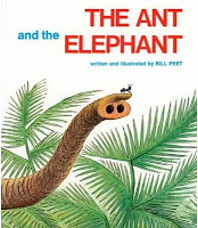 One story that clearly demonstrates both the potential for and value of taking the opportunity to contribute to a more harmonious community is “The Ant and the Elephant” by Bill Peet. Each character, beginning with a tiny ant, encounters problems during the day, but none are willing to help each other until the friendly elephant enters the scene. There’s no reward for the elephant beyond a simple thank you from the ant, and there is much badgering and ungratefulness along the way. Nonetheless, the elephant chooses to pleasantly help each animal. His problem comes when he begins to brag that he is always the helper and will never need others to help him. The WE story begins to emerge when the elephant needs rescuing, and the grateful ant recruits an entire community of ants to strive beyond what any of them thought possible. The book’s publicity material summarizes the story as, “many creatures are helped when two animals refuse to conform to the rules of the jungle.”
One story that clearly demonstrates both the potential for and value of taking the opportunity to contribute to a more harmonious community is “The Ant and the Elephant” by Bill Peet. Each character, beginning with a tiny ant, encounters problems during the day, but none are willing to help each other until the friendly elephant enters the scene. There’s no reward for the elephant beyond a simple thank you from the ant, and there is much badgering and ungratefulness along the way. Nonetheless, the elephant chooses to pleasantly help each animal. His problem comes when he begins to brag that he is always the helper and will never need others to help him. The WE story begins to emerge when the elephant needs rescuing, and the grateful ant recruits an entire community of ants to strive beyond what any of them thought possible. The book’s publicity material summarizes the story as, “many creatures are helped when two animals refuse to conform to the rules of the jungle.”
As graduation approaches at CMU and at the Children’s School, we reflect with gratitude on the innovative connections and collaborations that made our school year on campus possible, even though some needed to work and learn remotely. Our comfortable routines were not appropriate for the pandemic context, and the uncertainty and fear related to the Coronavirus threatened to derail our planning and drain our budget. The challenge we faced was to proactively engage our passions to consider new possibilities to create a desirable learning context for everyone involved. The CMU and Children’s School leadership teams both chose to tell the WE story by continually asking, “What do WE want to happen? What’s best for US? What’s OUR next step? (p. 184)”. We sincerely appreciate everyone who engaged in the dialogue, shared your spark, and became a contribution so that together we could envision the possibilities that became a creative and constructive school year. Let’s use The Art of Possibility lessons as we approach a “near normal” for our 2021-2022 year.
